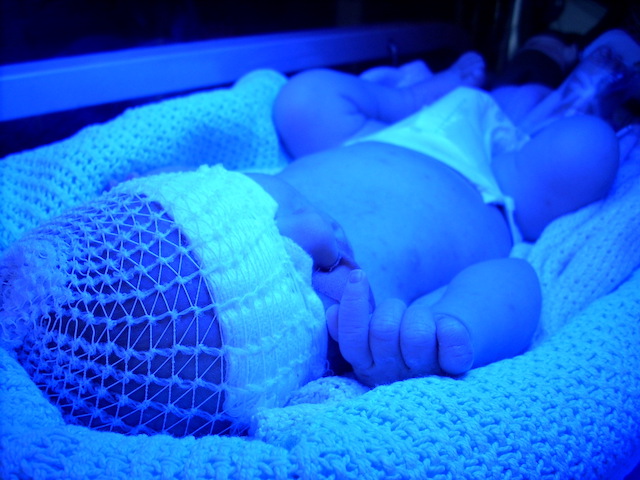
Overview
In 1999 Bhutani et al.1 published nomograms of hour-specific bilirubin in healthy term and near-term newborns. The AAP 2004 treatment recommendations provided guidelines for phototherapy in infants of 35 or more weeks’ gestation which incorporated hour-specific thresholds as well as defining categories of risk (depending on gestation and the presence of additional risk factors)2.
On August 5, 2022, the AAP updated these guidelines, raising the thresholds for treatment3,4. PediTools5 launched a clinical decision support tool for the updated guidelines on August 8, 2022.
This document presents visualizations comparing hour-specific bilirubin phototherapy and exchange transfusion thresholds from both the AAP 2004 and 2022 guidelines, as well as the Bhutani nomograms.
Derivation of the new thresholds
An understanding of how the new 2022 thresholds were derived may be helpful2.
Based on evidence that bilirubin-induced neurotoxicity does not occur until levels well above the 2004 exchange transfusion thresholds4, the thresholds for phototherapy and exchange transfusion were increased in 2022.
The 2004 AAP guidelines defined three risk categories using a combination of gestational age and risk factors. In contrast, the 2022 AAP guidelines separated gestational age from the risk factors.
In 2004, the risk factors were for risk of severe hyperbilirubinemia. In a subsequent 2009 update6, and for the 2022 guidelines, they instead reflect neurotoxicity risk factors. However, in general, the risk factors themselves stayed quite constant.
2004 guideline risk categories
- Lower: >= 38 weeks and well
- Medium: >= 38 weeks with risk factors OR 35 - 37 6/7 weeks and well
- Higher: 35 - 37 6/7 weeks with risk factors
Appendix C of the new guidelines3 describes how the 2022 thresholds were derived:
2022 phototherapy thresholds for no neurotoxicity risk factors
- 40 weeks and no risk factors set 2 mg/dL higher than 2004 “lower risk” infants
- 35 weeks and no risk factors set 1 mg/dL higher than 2004 “medium risk” infants
- 36 to 39 weeks and no risk factors were evenly spaced between these thresholds
2022 phototherapy thresholds for ANY neurotoxicity risk factors
- 38+ weeks and ANY risk factors set 1 mg/dL higher than “medium risk” infants
- 35 weeks and ANY risk factors set 1 mg/dL higher than “higher risk” infants
- 36 or 37 weeks and ANY risk factors were evenly spaced between these thresholds
2022 exchange transfusion thresholds
- the difference between the 2004 exchange transfusion and 2004 phototherapy thresholds were determined for each group, and that difference was added to the 2022 phototherapy thresholds to derive the new exchange transfusion thresholds
Extrapolation was also performed out to 14 days (336 hours) age, so that one week of additional chronologic age would bring the thresholds up to the equivalent for a newborn one week chronologic age younger, but born at an additional completed week of gestation.
Complete set of bilirubin curves
Comparing the 2004 and 2022 guideline treatment thresholds requires determining which groups between the two sets are equivalent; e.g., the correspondence between the 2004 low, medium, and high risk groups and the 2022 gestational age and neurotoxicity risk factor-specified groups.
Each of the 2022 guideline bilirubin treatment threshold curves was assigned to the 2004 risk category it would have corresponded to in the 2004 guidelines.
The following displays an overview of the increase in phototherapy and exchange transfusion thresholds between 2004 and 2022 (as well as the 1999 Bhutani nomograms).
For easier comparison, the following three plots display the same information in more detail.
Lower risk bilirubin thresholds, from 2004 to 2022

- In the AAP 2022 guidelines for exchange transfusion in the absence of neurotoxicity risk factors, thresholds for 38, 39 and 40+-week babies are the same
Medium risk bilirubin thresholds, from 2004 to 2022

- In the AAP 2022 guidelines
- for phototherapy if there are ANY neurotoxicity risk factors present, thresholds for 38, 39 and 40+-week babies are the same
- for exchange transfusion if there are ANY neurotoxicity risk factors present, thresholds for 38, 39 and 40+-week babies are the same
Higher risk bilirubin thresholds, from 2004 to 2022

Ulterior motives
This document also gives me an excuse to start learning RStudio / Posit’s Quarto for technical writing, the successor to RMarkdown, including trying out support for Zotero citations, margin notes, quoted text, table of contents generation, use of increased width, etc.
Addendum
A few corrections and clarifications were made on 2022-11-09, regarding the genesis of the AAP 2004 guidelines as well as correcting poor wording describing the AAP 2022 thresholds at 38, 39, and 40+ weeks for phototherapy in the presence of risk factors, and for exchange transfusion both with and without risk factors. Thanks to Dr. Newman for catching the errors.
